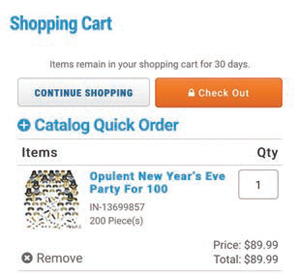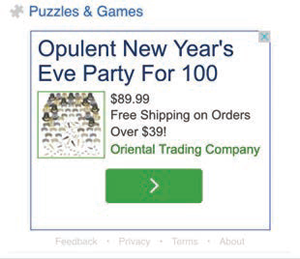Getting Shoppers to Recover their Carts

By Amberly Dressler, Managing Editor
There are two sides, positives and negatives, to shopping cart abandonment.
On one hand, it can signal friction in the checkout process (e.g. lengthy forms, slow load times, high shipping costs, login issues, etc.) but on the other, shopping cart abandonment can merely indicate a shopper is in the research phase of their buying experience.
Retailers need to look to their analytics to understand the differences. This is because the majority of consumers use online shopping carts as a place to store products and, further, 37 percent of consumers who expect a shopping cart reminder also expect to receive a coupon to motivate them to finish their purchase (source: Bronto, 2015).
According to Kahuna's (a communication automation company) Doug Roberge, the issue is that items sit in shopping carts and fail to get purchased. Roberge advises that in order to overcome this, marketers need to be aware of what's waiting to be purchased and leverage tools that help highlight the best time for a conversion push (see sidebar). For example, if the item is a larger purchase, the brand might allow the customer a bit more time before reminding her of the unpurchased item.
"Overcoming ecommerce friction is a delicate equation that shouldn't be rushed or pushed too aggressively, but marketers can't wait on the sidelines just hoping customers will make their forgotten purchases on their own," said Roberge.
For luxury or big-ticket items brands should consider developing content that informs the potential buyer about the product. An email about the cost- or energy-saving benefits of a new washing machine can keep the product top of mind for the person who left it in their shopping cart. If opened, this message could serve as the perfect segue for an email containing a promotional offer (e.g. free delivery). The re-marketing of products with longer lifecycles should be more sensitive to the investment the user will have to make.
When it comes to smaller, more everyday purchases, retailers can increase the frequency in which they serve retargeted campaigns. While nobody wants to be bombarded with ads, they are expected. When best practices are followed (check out, "3 Retargeting Best Practices for Retail" at wsm.co/3retarget), retargeting is a highly effective way to get shoppers to recover their shopping carts. In fact, a 2014 study from Visual Website Optimizer (VWO) indicated that 72 percent of millennials (age 25-34) will purchase products left in their cart if they are offered them again at a discounted price.
The problem, however, is that the majority of that same demographic are using ad blocking, according to Charles Nicholls, SVP of product strategy, marketing solutions at SAP and, "when they go dark, they go dark forever." (For further insights, read, "How Marketers Can Overcome Ad Blocking" at wsm.co/adblocksos.)
When marketing messages are contextual, consistent and relevant (the three elements of fixing a broken marketing system as discussed at SAP hybris Summit in October), however, brands have a fighting chance.
Relevancy ges beyond retargeting with the products in a user's cart. It also responds to user intent and hybris Profile has a rather unique method of addressing the natural decay in intent that arises when someone abandons a website, shopping cart or other brand experience. For example, if a person is looking at a camera, leaves the site and then comes back to look at the camera again, the "intent score" ges up and so too des the frequency of personalized emails, landing pages, etc. If they come back to the website without ever viewing the camera again, the intent score ges down. If someone buys a different camera altogether, the Profile solution ends the retargeting entirely.
While retailers think abandoned carts were pervasive in 2015, they will likely increase in the New Year as sites remember carts for longer (see images) and modern shoppers test which companies will incentivize them to complete their purchases.


Oriental Trading Company keeps shopping carts for 30 days and uses them to retarget instaneously across the Web.
Retailers not leveraging retargeting are behind the curve, but simple strategies won't be enough to lure modern shoppers to purchase. Creating wishlist capabilities, intent scores and more will set the bar in 2016.








